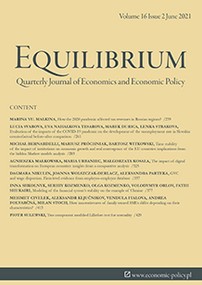Assessment of the social exclusion at the regional level using multi-criteria approach: evidence from the Czech Republic
Assessment of the social exclusion at the regional level using multi-criteria approach: evidence from the Czech Republic
Author(s): Roman Vavrek, Eva KovářováSubject(s): Methodology and research technology, Family and social welfare, Present Times (2010 - today), Socio-Economic Research
Published by: Instytut Badań Gospodarczych
Keywords: social exclusion; TOPSIS technique; Coefficient of Variance method;
Summary/Abstract: Research background: Social services are the main social tool used for the prevention and solution of social exclusion and its risk. Services of social prevention are focused on the wellbeing of the whole society and they prevent it from the influence of a wide range of socioeconomic phenomena related to social exclusion, understood in multidimensional terms. Purpose of the article: The purpose of the paper is to evaluate districts of the Czech Republic with respect to selected socio-economic factors that lead or can lead to social exclusion, when the emphasis is placed on the exclusion of children and youth, and to identify the causes of differences existing among these districts within the period of years 2011–2016. Methods: The paper focuses on multi-criterial assessment of districts of the Czech Republic using 23 indicators covering main aspects of social exclusion, which are processed with the Technique of Order Preference Similarity to the Ideal Solution (TOPSIS technique) in combination with the Coefficient of Variance method used to determine the indicators’ weight. The results obtained using these methods are completed by the Moran’s index, Shapiro-Wilk test, Mann-Whitney test, Kolmogorov-Smirnov test, Kendall Rank Coefficient and Levene’s test. Findings & value added: A small number of districts with very negative assessment, with the presence of social exclusion and its higher risk, respectively, are identified. Differences among regions are constant and could not be assigned to randomness or disposable changes in the structure of indicators. Higher number of children born to unmarried mothers can be considered a typical aspect of the districts with higher risk of the social exclusion. The methods applied in the research, whose results and findings are presented in the paper, can be inspiring to further studies focusing on the social exclusion in its multidimensionality. The research is framed with the European Union discourse of social exclusion, thus the presented findings also open space for the comparisons and discussions of the factors associated with the social exclusion in other European Union Member States.
Journal: Equilibrium. Quarterly Journal of Economics and Economic Policy
- Issue Year: 16/2021
- Issue No: 1
- Page Range: 75-102
- Page Count: 28
- Language: English

